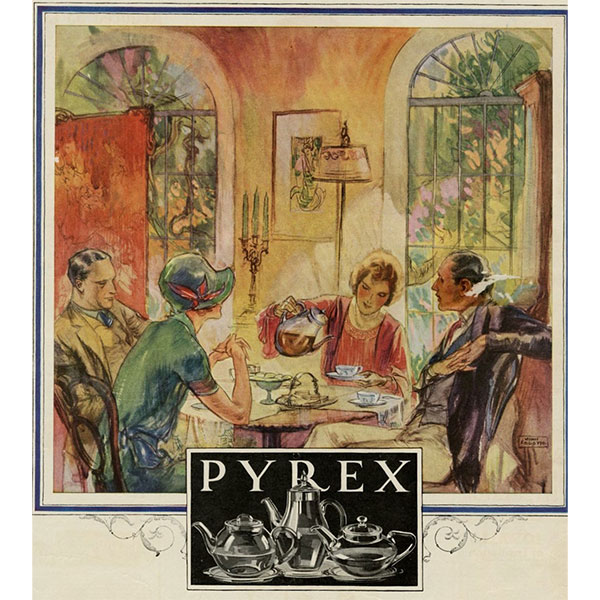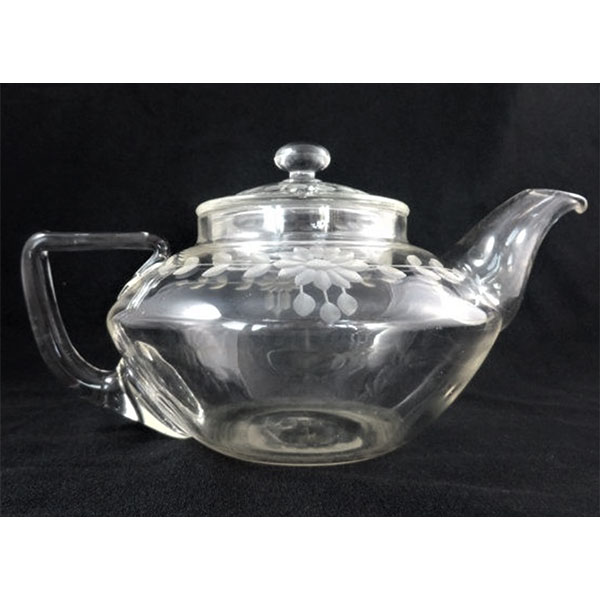By Louise Irvine
Glass teapots may appear to be a modern addition to the tea party but they have been with us since the Art Deco era when heat-resistant borosilicate glass was first used in domestic settings. In the US, we are most familiar with Pyrex which was introduced by Corning Glass Works in 1915. However, borosilicate glass was first developed by German glassmaker, Otto Schott, in the late 19th century.
The Corning Glass Works in New York is credited with producing the first truly functional glass teapot in 1922. It was designed by Frederick Carder and hand-blown with Pyrex borosilicate glass which is heat-resistant and can withstand extreme temperatures. Carder designed tall, round, and squat Pyrex teapots, some of which were decorated with foliate patterns.
A 1931 Corning Glass advertisement extolled the “miracles wrought by a magic bubble of shining glass” and illustrated their new spoutless teapot with an unbreakable chromium handle. The “crystal clear and gossamer sheer” design was immune to heat and cold from the oven to the icebox. Additionally, housewives could see when the tea reached “perfection’s peak” and of course it was easy to tell that Pyrex Ware was clean. Pyrex percolators could also make coffee taste better too according to the ads.
Meanwhile in Germany, Wilhelm Wagenfeld was perfecting a heat-resistant glass teapot for Schott & Genossen, specialists in laboratory glass. A silversmith by training, Wagenfeld studied at the Bauhaus and became one of the pioneers of modern industrial design. He researched the manufacturing process at the Janaer Glassworks and created a hugely successful range of household products in their borosilicate glass. His sophisticated teapot was launched in 1932 and is still being made today.
Today’s borosilicate glass teapots are suitable for stovetop and microwave use but many fans are seduced by the aesthetic and transparent qualities of the material. Glass adds a new dimension to the art of tea making as you can see the loose tea leaves unfurl and brew. Blooming tea balls, such as flowering Jasmine, are particularly attractive to watch. You can also visualize the strength and color of the infusion from pale yellow to dark emerald blends of green teas.
Read more about...

Pyrex ad detail 1924 John La Gatta Corning Museum of Glass

Pyrex Engraved Teapot Frederick Carder

Wagenfeld Teapot

Wagenfeld Advertisement
